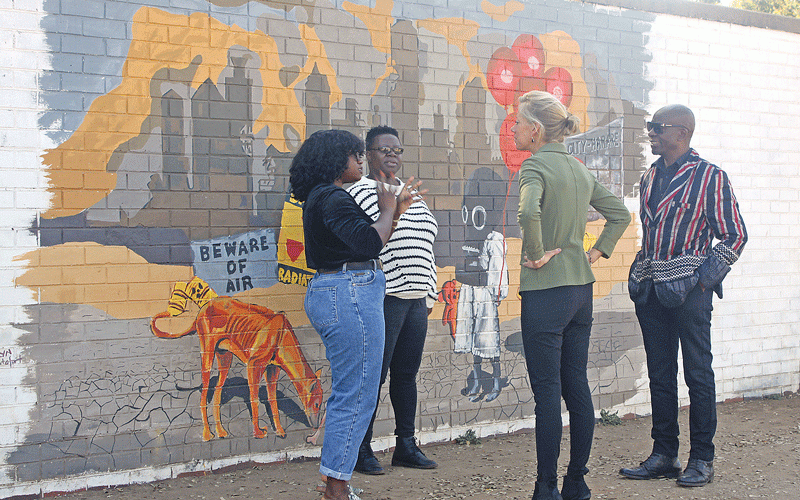
WALLS never stay blank for long in high-density suburbs such as Mbare just as in similar residential areas in London and New York, where people paste posters, tag the walls with graffiti, and paint murals reflecting on different aspects of the community.
In commemoration of World Environment Day, Harare-based visual artist Merilyn Mushakwe recently painted a mural in Mbare that carries a strong message about climate change.
Mushakwe was commissioned by the Netherlands embassy to create the work, which is along Pazarangu Avenue on part of a wall surrounding the Mbare Arts Centre.
The piece was officially unveiled on June 5, which is World Environment Day.
Raphael Chikukwa, the executive director for the National Gallery of Zimbabwe (NGZ), Fadzai Muchemwa, curator for contemporary art at NGZ and Eva van Woersem, Netherlands deputy ambassador to Zimbabwe, were on site with the artist to see the finished work.
Held annually since 1973, World Environment Day is led by the United Nations Environment Programme (UNEP) and is the largest global platform for environmental public outreach.
The theme for 2023 is Solution to Plastic Pollution, which highlights the need to limit waste and take action against plastic pollution as a means to tackle the climate change crisis.
The mural was done in predominantly brown, gray and other dark colours, painting a gloomy picture of a future after a climate catastrophe due to pollution.
- COP26 a washout? Don’t lose hope – here’s why
- Out & about: Bright sheds light on Vic Falls Carnival
- COP26 a washout? Don’t lose hope – here’s why
- Out & about: Bright sheds light on Vic Falls Carnival
Keep Reading
It depicts a city that can be recognisable by the grey silhouette of tall buildings that make out the skyline of Harare’s central business district.
The work depicts a young girl whose face is obscured by an ominous gas mask.
In the dystopian landscape, the soil is dry and capped indicating a long drought, and the state of air which is not tangible is alluded to by a notice that warns “BEWARE OF AIR”.
An emaciated mongrel sniffs at a clean bone. There is no sign of vegetation in this desolate landscape.
Commenting on her work, the artist said the mural was concerned with non-biodegradable waste polluting the environment and turning the earth into a toxic wasteland.
Her work is in consideration for, “the unfortunate souls who are left to live in this post apocalyptic world”.
Regarding the accumulation of waste, Muchemwa said waste management does not end when it is collected.
“We don’t often think about how we process our waste, and the proper disposal of anything. We just think that the Harare Municipality will collect the waste,” she said.
The Netherlands deputy ambassador expressed her appreciation of the mural saying: “It is very powerful and shows a clear message to people who are driving by and walking by, it draws your attention.”
Clearly, the mural depicts a worst-case scenario and, as such, can be described as alarmist by those who don’t believe in climate change.
Climate-deniers may label the artist’s bleak vision of the future as soothsaying.
Mushakwe, however, insists that her work is based on the fact that the earth is unable to process our pollution, and her work “is a literary way of showing the result of our actions”.
A mural in the old suburb of Mbare is a very effective tool of communication.
This can be seen by the profusion of posters for music shows and other events tagged to various walls as one goes around the suburb.
Across the street, there is also a line of houses from which people will interact with the mural and share its message with those who will be passing by.






